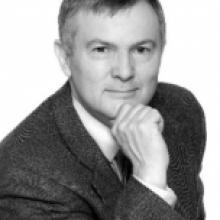
Andrew Whittaker is a SUNY Distinguished Professor in the Department of Civil, Structural and Environmental Engineering at the University at Buffalo, and holds a Faculty Joint Appointment at the Idaho National Laboratory. Whittaker is a registered civil and structural engineer (SE) in the State of California. His undergraduate degree in civil engineering is from the University of Melbourne (1977) and his MS (1985) and PhD (1988) degrees are from the University of California, Berkeley. Andrew Whittaker has been recognized in his profession for academic and design-professional contributions to the structural engineering in the United States with the 2016 ASCE Stephen D. Bechtel Jr. Energy Award, the 2017 ASCE Walter P. Moore Jr. Award, the 2023 ASCE Nathan M. Newmark Medal, and the 2023 ANS Untermeyer & Cisler Reactor Technology Medal. Whittaker is a Fellow of ASCE, a the Structural Engineering Institute of ASCE, and the American Concrete Institute, and a member of ANS, AISC, and EERI.
Andrew Whittaker has contributed to the writing of ASCE standards, and ATC/FEMA guidelines for more than 30 years. He made significant contributions to the first generation of tools for performance-based earthquake engineering (FEMA 273, FEMA 274, FEMA 356, ASCE 41) and led the structural engineering team that developed the second generation of these tools (FEMA P-58). Whittaker has served as Chair of the ASCE Nuclear Standards Committee since 2015. Whittaker consults to federal agencies, regulators, consultancies, contractors, reactor developers, energy companies, and utilities in the United States, Canada, United Kingdom, Europe, and Asia, on topics ranging from micro-reactors to large-light water reactors, to underground nuclear waste storage facilities, and other mission-critical structures such as data centers, hospitals, tall buildings, dams, and giant telescopes.
Risk-informed pathways for the design and licensing of next generation nuclear facilities are being developed by standards development organizations (e.g., AMSE, ANS, ASCE), power utilities, reactor developers, and the Nuclear Regulatory Commission and its consultants. The presentation will focus on recent work to develop and document a technical basis for risk-informed, performance-based seismic design procedures for conventionally founded and base-isolated nuclear civil structures. The proposed procedures build on the seminal studies of Cornell, Kennedy, McGuire, and Kircher, spanning the late 1960s to the late 2000s, and take advantage of work completed in the 1990s and 2000s by the Applied Technology Council, which resulted in FEMA 273/274/356/P695/P58 and ASCE 41. The procedures involve the convolution of seismic hazard curves and system-level fragility functions, and the presentation will address how default dispersions for the fragility functions were derived to support risk calculations. Plans to implement these procedures in the soon-to-be merged ASCE/SEI 4 and ASCE/SEI 43 will be discussed.
